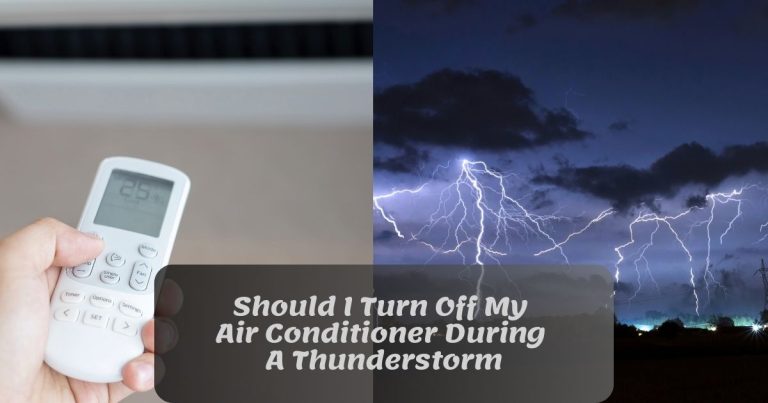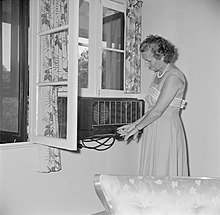Can I Get Carbon Monoxide Poisoning From My Air Conditioner? Unveiling The Risks
No, it is highly unlikely to get carbon monoxide poisoning from your air conditioner. Carbon monoxide is produced by the incomplete combustion of fuels, and air conditioners do not use fuel as a heat source. However, it is important to ensure proper ventilation and maintenance of your air conditioner to prevent the buildup of other potential pollutants.
Did you know that your air conditioner could potentially be putting you at risk for carbon monoxide poisoning? It’s a concern that many homeowners, especially those with central air conditioning systems, may not be aware of. In this blog article, we will explore the question: “Can I get carbon monoxide poisoning from my air conditioner?” Maintaining a safe and healthy living environment is a top priority for homeowners, and understanding the risks associated with their air conditioning systems is crucial.
From concerns about indoor air quality to potential health hazards, it’s essential to be well-informed. With varying levels of knowledge, ranging from basic understanding of air conditioning systems to more advanced knowledge on carbon monoxide risks, homeowners face the challenge of staying informed and taking the necessary precautions to protect their loved ones.
In this article, we will delve into the topic of carbon monoxide poisoning from air conditioners, providing you with the information you need to ensure the safety of your home. We will explore the causes of carbon monoxide emissions, how to detect them, and most importantly, how to prevent them. From maintenance tips to signs to watch out for, we will cover all the bases to ensure you have a comprehensive understanding of this potential risk.
By the end of this article, you’ll be equipped with the knowledge to make informed decisions about your air conditioning system and maintain a safe, healthy environment for you and your family. So, let’s dive in and uncover the truth about carbon monoxide poisoning from air conditioners. Your safety is our priority, and we’re here to provide you with the information you need to protect yourself and your loved ones.
Understanding Carbon Monoxide Poisoning
What is Carbon Monoxide?
Before we delve into the topic of carbon monoxide poisoning from air conditioners, it’s important to understand what carbon monoxide is. Carbon monoxide (CO) is a colorless, odorless gas that is produced when fuels such as gas, oil, coal, and wood are burned. It is highly toxic and can be extremely dangerous, even in small amounts.
How Does Carbon Monoxide Poisoning Occur?
Carbon monoxide poisoning occurs when there is an accumulation of CO in an enclosed space, such as your home. It can happen when combustion appliances, like furnaces, water heaters, or air conditioners, are not functioning correctly or are improperly installed or maintained.
Signs and Symptoms of Carbon Monoxide Poisoning
Carbon monoxide is often referred to as the “silent killer” because it is impossible to detect without proper equipment. It can cause a wide range of symptoms, which can vary depending on the level of exposure and the duration. Some common signs and symptoms of carbon monoxide poisoning include:
- Headache
- Dizziness
- Nausea
- Shortness of breath
- Confusion
- Fatigue
- Loss of consciousness
In severe cases, carbon monoxide poisoning can be fatal. It is essential to be aware of these symptoms and take immediate action if you suspect carbon monoxide poisoning.
Can Air Conditioners Emit Carbon Monoxide?
Now that we have a basic understanding of carbon monoxide and its dangers, let’s address the question at hand: Can air conditioners emit carbon monoxide?
The Risk of Carbon Monoxide Emissions from Air Conditioners
Air conditioners, especially those that use combustion processes, such as gas or oil, to cool or heat the air, have the potential to emit carbon monoxide. However, it’s important to note that modern air conditioning systems, when installed and maintained properly, have built-in safety measures to prevent carbon monoxide emissions.
The primary concern for carbon monoxide emissions from air conditioners arises when there are issues with the system, such as:
- Improper installation
- Improper maintenance
- Cracked heat exchangers
- Blocked ventilation
- Malfunctioning fuel-burning components
If any of these issues occur, the combustion process within the air conditioner can be disrupted, leading to the release of carbon monoxide into your home.
Types of Air Conditioners That Pose a Risk
While it’s essential to note that all air conditioners have the potential to emit carbon monoxide if not functioning correctly, certain types of air conditioning systems pose a higher risk. These include:
- Central air conditioning systems
- Gas or oil furnaces with integrated air conditioning units
- Window air conditioning units with gas or oil heating elements
It’s important to be especially vigilant if you have one of these types of air conditioners in your home.
Preventing Carbon Monoxide Poisoning from Air Conditioners
Regular Maintenance and Inspections
The key to preventing carbon monoxide emissions from air conditioners is regular maintenance and inspections. It’s crucial to have your air conditioning system serviced by a qualified professional at least once a year. During the maintenance visit, the technician will:
- Check for any signs of damage or wear
- Clean and inspect the components
- Test the combustion process
- Ensure proper ventilation
- Identify and address any issues
By scheduling regular maintenance and inspections, you can catch any potential problems before they lead to carbon monoxide emissions.
Carbon Monoxide Detectors
In addition to regular maintenance, installing carbon monoxide detectors is crucial for the safety of your home. These detectors can alert you to the presence of carbon monoxide in your indoor air, allowing you to take immediate action. Place carbon monoxide detectors near bedrooms and on each level of your home for maximum protection.
Proper Ventilation
Proper ventilation is essential in preventing carbon monoxide buildup. Ensure that the area around your air conditioner is clear and free from any obstructions. If you have a central air conditioning system, make sure the ductwork is clean and unobstructed to allow for proper airflow.
Professional Installation
When installing a new air conditioning system or replacing an existing one, it’s crucial to hire a professional HVAC technician to ensure proper installation. Improper installation can lead to a range of issues, including carbon monoxide emissions.
In conclusion, while air conditioners can potentially emit carbon monoxide, the risk is relatively low when the systems are installed and maintained correctly. Regular maintenance, inspections, and the use of carbon monoxide detectors are key in preventing carbon monoxide poisoning from air conditioners. By taking these preventive measures, you can ensure the safety and well-being of your home and loved ones.
Woman’s Mysterious Illness Turns Out to Be Carbon Monoxide Poisoning
Frequently Asked Questions (FAQ)
Can I get carbon monoxide poisoning from my air conditioner?
What are the symptoms of carbon monoxide poisoning?
How can I prevent carbon monoxide poisoning?
Are there any household appliances that can produce carbon monoxide?
What should I do if my carbon monoxide detector goes off?
Conclusion: The Importance of Proper Maintenance and Monitoring: Preventing Carbon Monoxide Poisoning from Air Conditioners
In conclusion, while air conditioners have the potential to emit carbon monoxide, the risk is relatively low when the systems are installed and maintained correctly. Carbon monoxide poisoning occurs when there is an accumulation of CO in an enclosed space, such as your home, and it can happen when combustion appliances, like air conditioners, are not functioning correctly or are improperly installed or maintained.
It is important to be aware of the signs and symptoms of carbon monoxide poisoning, which can include headaches, dizziness, nausea, shortness of breath, confusion, fatigue, and loss of consciousness. Immediate action should be taken if carbon monoxide poisoning is suspected.
Certain types of air conditioning systems, such as central air conditioning systems, gas or oil furnaces with integrated air conditioning units, and window air conditioning units with gas or oil heating elements, pose a higher risk of emitting carbon monoxide. It is especially important to be vigilant if you have one of these types of air conditioners in your home. Preventing carbon monoxide poisoning from air conditioners requires regular maintenance and inspections by qualified professionals.
During these visits, technicians will check for signs of damage or wear, clean and inspect components, test the combustion process, ensure proper ventilation, and address any issues that may arise. Installing carbon monoxide detectors is also crucial for the safety of your home. These detectors can alert you to the presence of carbon monoxide in your indoor air, allowing you to take immediate action.






